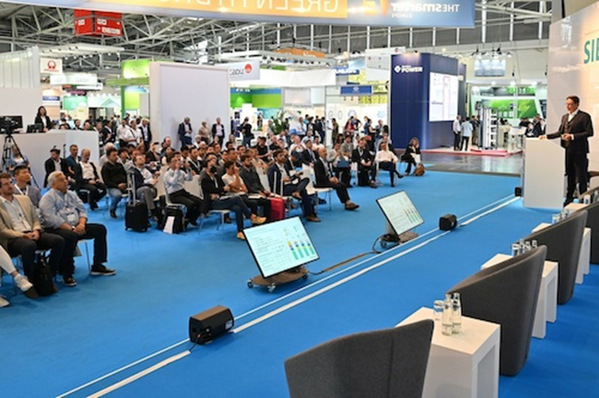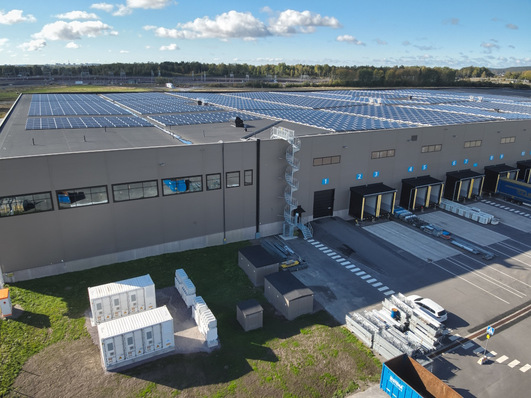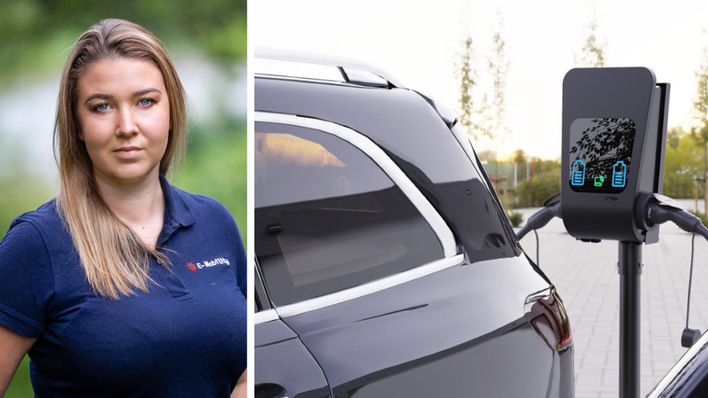Cars equipped with electric engines or other alternative drives are making major inroads. Scientists at the Centre for Solar Energy and Hydrogen Research Baden-Württemberg (ZSW) set out to develop a suitable filling station for these vehicles. Launched in mid-February 2018, this project goes to create a fuel 'pump' for the future. This dispenser is to deliver renewable electrical power, hydrogen and methane in the most efficient, cost-effective and purpose-driven way possible. The Federal Ministry for Economic Affairs and Energy is funding this project with around €1.3 million. It will run for five years as part QUARREE 100, an initiative to test an urban quarter's fully renewable power supply.
Vehicular mobility is sure to change markedly in the years ahead. Far more cars running on electricity sourced from wind and the sun will soon be out on the road. The same goes for fuel cell vehicles powered with renewable hydrogen and natural gas vehicles that run on methane, another climate-friendly fuel produced using solar power. The network of charging points and hydrogen filling stations is expanding on a massive scale. Some stations furnish both electricity and hydrogen, but none dispenses electrical power, hydrogen and methane. ZSW aims to change that with this project.
Tiered use of renewable energy
What the Stuttgart-based scientists have in mind is to develop a multienergy dispenser. The idea is to use the grid to charge electric cars' batteries with renewable electricity sourced from wind power plants and the like. A large stationary battery will store unused power when supply is greater than demand, and dispense it when demand is greater than supply. "If the battery is full and recharging electric cars cannot deplete it, this green electricity will be converted into hydrogen in a second step," says ZSW's Dr. Ulrich Zuberbühler by way of explanation. Fuel cell vehicles run on this type of energy. And if hydrogen production exceeds demand, the surplus gas goes into a storage tank.
Tomorrow's filling station will include third stage to produce methane when the hydrogen storage tank is full and demand from fuel cell cars is low. Carbon dioxide will then be added to the hydrogen to convert into methane. Both gases react to a catalyst to form methane. This fuel is the main component of natural gas, so natural gas cars can readily use it. If refueling cars do not deplete the methane supply, the surplus gas is stored and then piped into the natural gas grid when the storage tank fills up.
"With our project, the coupling of the electrical grid with mobility will not be limited to electric cars," explains Zuberbühler. "The other alternative drives will also benefit from it."
ZSW's researchers are talking about tiered use of renewable energy. Their priority is to make the most of resources by minimizing energy losses. Stage one is the first choice and remains so until its potential is exhausted. The most efficient use of regenerative electricity is to power electric motors. None of the energy is lost in translation, and battery storage loss amounts to no more than ten percent. Stages two and three—conversion to hydrogen and then methanation—are only an option once demand for electrical power has been met. Electrical power can be converted to hydrogen at around 75 percent efficiency; the figure for methane is roughly 60 percent. These gases are long-term, zero-loss stores of energy. Efficiency increases by a few percentage points when the waste heat generated during the conversion process is put to use.
Efforts to enhance components
With this project, ZSW aims to improve the efficiency, service life and cost-effectiveness of the two main components, a high-pressure alkaline electrolyzer and a plate methanation reactor. Scientists want to advance the state of the art for both on a 100-kilowatt scale. Electrolysis and methane synthesis will have to take place separately, which requires some form of hydrogen buffer or intermediate storage facility. The institute will develop a concept for this and assess its safety.
The researchers have three years to develop the technology, work out a safety concept and clarify all the details for approval. The results will be tested at an on-site demo facility starting in 2020.
This ZSW initiative is part of QUARREE 100, a €24 million lighthouse project that brings together academic institutes, business and public authorities in a bid to switch the energy supply of a section of Heide, a town in the county of Dithmarschen, to renewables. This filling station will serve the quarter as an 'energy center' where power is converted and stored.
Stepping up 'sector coupling'
Green electricity accounts for around a third of the power in Germany' grid, and its share is growing. This figure expected to rise to 65 percent by 2030. Off-grid use—for example, in electric cars and as an alternative fuel—would help make the transportation sector more climatefriendly. Little progress has been made on this front. The alternative fuels hydrogen and methane also have great advantages. They can serve as chemical media for long-term, loss-free energy storage. On top of that, they can be fed into Germany's natural gas grid and used to heat buildings without leaving a carbon footprint. The term coined to describe this convergence of electricity, fuel and heating across industries is sector coupling.
The funding for this project is part of a joint initiative of the Federal Ministry of Education and Research and the Federal Ministry of Economic Affairs to promote solar in building projects and energy-efficient urban development.
Special exhibition at Hannover Fair
Together with 25 other research institutes, organizations and companies from Baden-Württemberg the ZSW will present at Hannover Fair new products, pilot projects and ideas for climate friendly and connected mobility of tomorrow. The slogan of the special exhibition in the Baden-Württemberg Pavilion is “Boosting future mobility”. It takes place April 23-27. Coordinator is the State agency e-mobil BW. (HCN)
Read more about energy storage
Stay informed, get our free newsletter twice a week. Register here.
More useful information:







